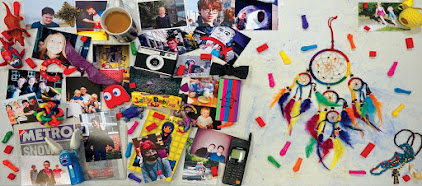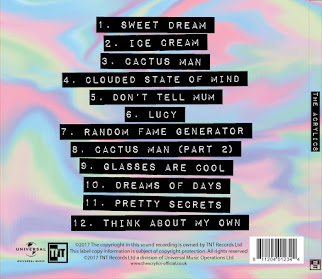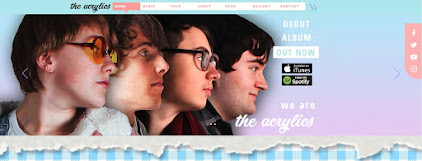A behind-the-scenes timelapse of the whole shoot day. It shows all, or at least most, of the experiences I have mentioned in the post, and is a good overview of the day to start with.
I enjoyed the main workshop shoot day quite a lot. It was a completely new experience for me, and thus it was pretty scary at first, but I think I settled into acting and so on over the course of the training sessions, so the main day wasn't too bad, and I was able to have fun.
The main role I took was acting as one of the cool kids- the actors in the music video who weren't part of the band.
The majority of the work I did on the day was acting work- I went into hair and make-up, acted in group shots, acted in solo shots, and so on.
I also helped out on the set when I wasn't acting- as I was just one of many cool kids, and not one of the band, I didn't have as much time on camera as some others, so I used this extra time to help out where needed.
I operated the clapperboard a few times- the director and main crew had a lot of important things to worry about, so me and the other actors taking over the process of writing in the shots and using the clapperboard helped them a lot, and ensured every shot was properly marked for editing later on.
I also performed a couple of runner duties, such as helping move equipment and props like desks and chairs around, for example setting them up for certain shots and then getting them out of the way, as well as helping to get the food cart at lunch time so that the crew members and other staff could have something to eat.
 |
| A 'behind-the-scenes' screenshot from one of the takes where I was operating the clapperboard. I had to write in the shot number and take number and so on. |
| Another picture of me acting- as I was in all of the shots requiring these desks and chairs, I helped get them out and set them up, as well as put them away afterwards. |
| Here I am during one of my breaks- I took the opportunity to sit down for a bit, and swapped to a long lens so that I could take some good shots of what was happening on set. |
I think my best bit in terms of what I found the most fun was probably the solo acting. It was generally less intense than the dancing groups shots, which were fun, but made me a bit self-conscious at times, although I think I conquered this and I don't think it affected my performance. I thought the solo acting would be scarier since the focus is just on you, but thanks to the crew it felt like a casual chat or one of the acting exercises, but still provided a lot of good footage.
| A profile shot of me during some solo acting work. The lighting was adjusted specifically for this shot, and I am performing a serious but fairly neutral expression. |












